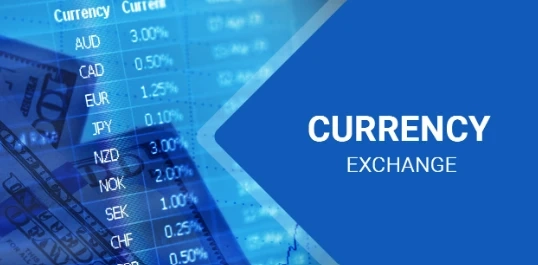In an increasingly interconnected world, the seamless exchange of currencies across international borders has become a critical aspect of global finance. Amidst various methods available, the telegraphic transfer has emerged as a pivotal tool, offering a swift and secure solution for simplifying currency exchange across boundaries. This article delves into the mechanics of telegraphic transfers and how they streamline currency exchange, providing individuals and businesses with an efficient means of conducting cross-border transactions.
Understanding Telegraphic Transfer
A telegraphic transfer, often referred to as TT, is an electronic mechanism designed to facilitate the movement of funds between parties located in different countries. This method has gained significant traction due to its ability to expedite currency exchange by minimizing delays and optimizing security measures. Whether it's a multinational corporation engaged in global trade or an individual sending money to family members overseas, telegraphic transfers offer a streamlined process that simplifies currency exchange across borders.
The Mechanics of Telegraphic Transfer
Initiation and Authorization: The process commences with the sender's request to initiate a telegraphic transfer through their financial institution. Once authorized, the sender provides pertinent details, including the recipient's bank information, account number, and the desired amount to be converted into the recipient's currency.
Simplifying Cross-Border Currency Exchange
Speed and Efficiency: Telegraphic transfers offer a rapid and efficient method of currency exchange, often completing transactions within a matter of hours or a few business days. This agility is particularly advantageous for time-sensitive financial obligations, such as settling international trade invoices or addressing urgent monetary needs.
Security and Confidence
The telegraphic transfer process prioritizes security through encryption and stringent authentication protocols. This commitment to data protection reassures both senders and recipients, instilling confidence in the integrity of the currency exchange.
Transparent Costs
With transparent fee structures and competitive exchange rates, telegraphic transfers provide a clear understanding of the costs associated with cross-border currency exchange. This transparency enables individuals and businesses to make informed decisions based on their financial requirements.
Reduced Risk of Errors
The digital nature of telegraphic transfers reduces the potential for human errors that can occur with manual methods, such as checks or cash handling. This minimizes the likelihood of discrepancies and ensures accurate currency conversion.
Considerations for Utilizing Telegraphic Transfers
Exchange Rates and Fees: While telegraphic transfer offers efficiency, it's crucial to assess the prevailing exchange rates and any associated fees. A comprehensive understanding of these factors helps optimize the value of the currency exchange.
Recipient Details
Accurate and complete recipient information is paramount to ensure a seamless transfer. Any inaccuracies could lead to delays or complications in the currency exchange process.
Regulatory Compliance
Different countries may have varying regulations concerning incoming funds. Familiarizing oneself with relevant regulations ensures compliance and minimizes potential disruptions during the currency exchange.
Alternate Options
While telegraphic transfers excel in swiftness and security, it's prudent to explore alternate currency exchange methods, such as online platforms or international wire transfers, based on individual needs and preferences.
The Evolution of Currency Exchange
Historically, the process of exchanging currencies across borders was laden with complexity and often involved multiple intermediaries. These convoluted procedures led to delays, high costs, and a heightened risk of errors. However, the advent of telegraphic transfers revolutionized this landscape, introducing a seamless and digitized method that streamlined cross-border transactions.
Harnessing the Digital Advantage
At the heart of telegraphic transfers lies their digital nature, enabling funds to traverse continents in the blink of an eye. The electronic initiation of the transfer facilitated through banks or online platforms, initiates a chain reaction that propels the funds toward their destination. This digital trail minimizes manual interventions, reducing the scope for errors and ensuring a precise currency exchange process.
Global Connectivity through SWIFT
A significant enabler of telegraphic transfers is the Society for Worldwide Interbank Financial Telecommunication, more commonly known as SWIFT. This global network of financial institutions acts as a reliable conduit, routing transfer instructions and financial messages securely across borders. SWIFT's role in telegraphic transfers underscores the collaborative nature of modern finance, where a seamless exchange of information complements the seamless exchange of currencies.
Conclusion, telegraphic transfers stand as a testament to the evolution of financial systems, offering a streamlined and secure means of simplifying currency exchange across borders. With their efficiency, security, and potential for reducing costs, telegraphic transfers empower individuals and businesses to navigate the complexities of international finance with confidence. By understanding the mechanics, benefits, and considerations associated with telegraphic transfers, stakeholders can harness this invaluable tool to optimize cross-border currency exchange and usher in a new era of seamless global transactions.


